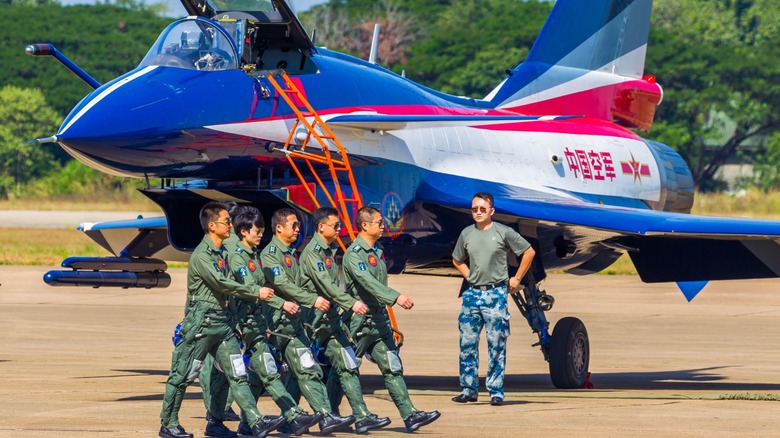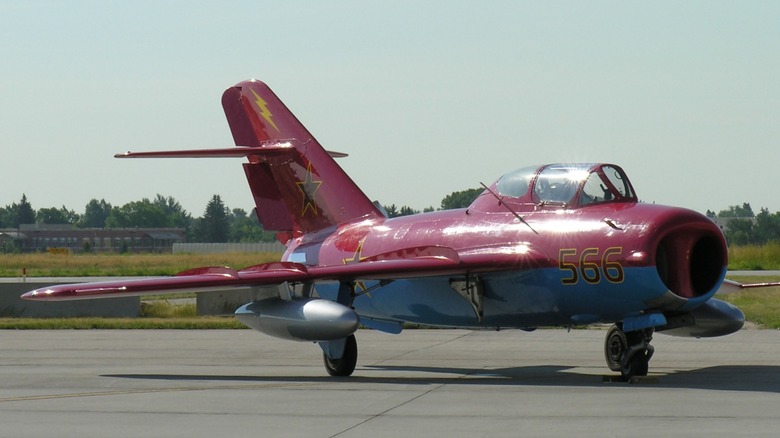What Does The 'J' On Chinese Fighter Jets Mean?
As China builds up its military capabilities, more and more comparisons are being made between its assets and those of the United States, such as comparing the payload, range, and top speed of the J-35 versus the F-35 Lightning II, its American counterpart. Both planes are state-of-the-art, 5th-generation jets with enhanced stealth capabilities, but they also have another thing in common — their mission design series (MDS), also known as a designation letter.
You might be telling yourself at this point that, no, that's not the case, because the F-35 and J-35 clearly have different designation letters (F and J, respectively). However, when taking the native languages of each superpower into account, the designation letters of both jets — F and J — actually mean the same thing. The "F" mission prefix that starts off the names of many American military planes, such as the F-15, F-22, and F-36, stands for "fighter." It may be straightforward, but it gets the job done, designating these powerful aircraft as planes built for active combat. (Similarly, "F/A" stands for "Fighter/Attack.")
The "J" in J-35 and other Chinese planes — like the oldest fighter jet still used today, the J-5 — also stands for "fighter." But, it's a little more complicated because Mandarin works differently than the English language. The "J" comes from the Mandarin word "jianjiji," which contains multiple characters — 歼击机 — that mean "annihilate," "strike," and "aircraft/machine," respectively. Combining these characters creates "jianjiji," or "annihilation-strike aircraft." "Fighter" is another way to describe an "annhilation-strike aircraft," which is why the "J" on Chinese military planes is generally considered to mean "fighter" or "fighter jet." Sometimes, the "J" will just be referred to as "jian" rather than "jianjiji," because "jian" is the first character and translates to "annihilate."
What does 'JJ' on Chinese fighter jets stand for?
Some Chinese military planes have "JJ" as their mission prefix, such as the JJ-6 and JJ-7. You might think this stands for "jianjiji jianjiji" — perhaps some sort of extra-lethal fighter jet — but this isn't the case. The first "J" in "JJ" does indeed still represent "jianjiji" or "fighter," but the second "J" is short for "jiaolianji," which translates from Mandarin to "trainer." Thus, Chinese military planes with "JJ" designations are training aircraft, which typically aren't armed or used in active combat but instead to help pilots learn and practice flying a particular fighter jet. These training aircraft can also be used in Chinese military exercises, such as when JJ-7 planes role-played as enemy fighters in 2021.
Like "jianjii," the Mandarin word "jiaolianji" is formed by combining multiple Chinese characters (教练机). The first, "jiao," means "teach" and the second, "lian," means "practice." The third, "ji," is the same character used in "jianjiji" and means "machine" or "aircraft." These three characters combine into "jiaolianji" to represent "training aircraft." The "JJ" designation pairs the two J-words "jianjiji" and "jiaolianji" and translates to "fighter trainer." So, if China's military were to ever create a training variant for its advanced and unusual J-36 fighter jet prototype, it would likely be designated as a JJ-36.

